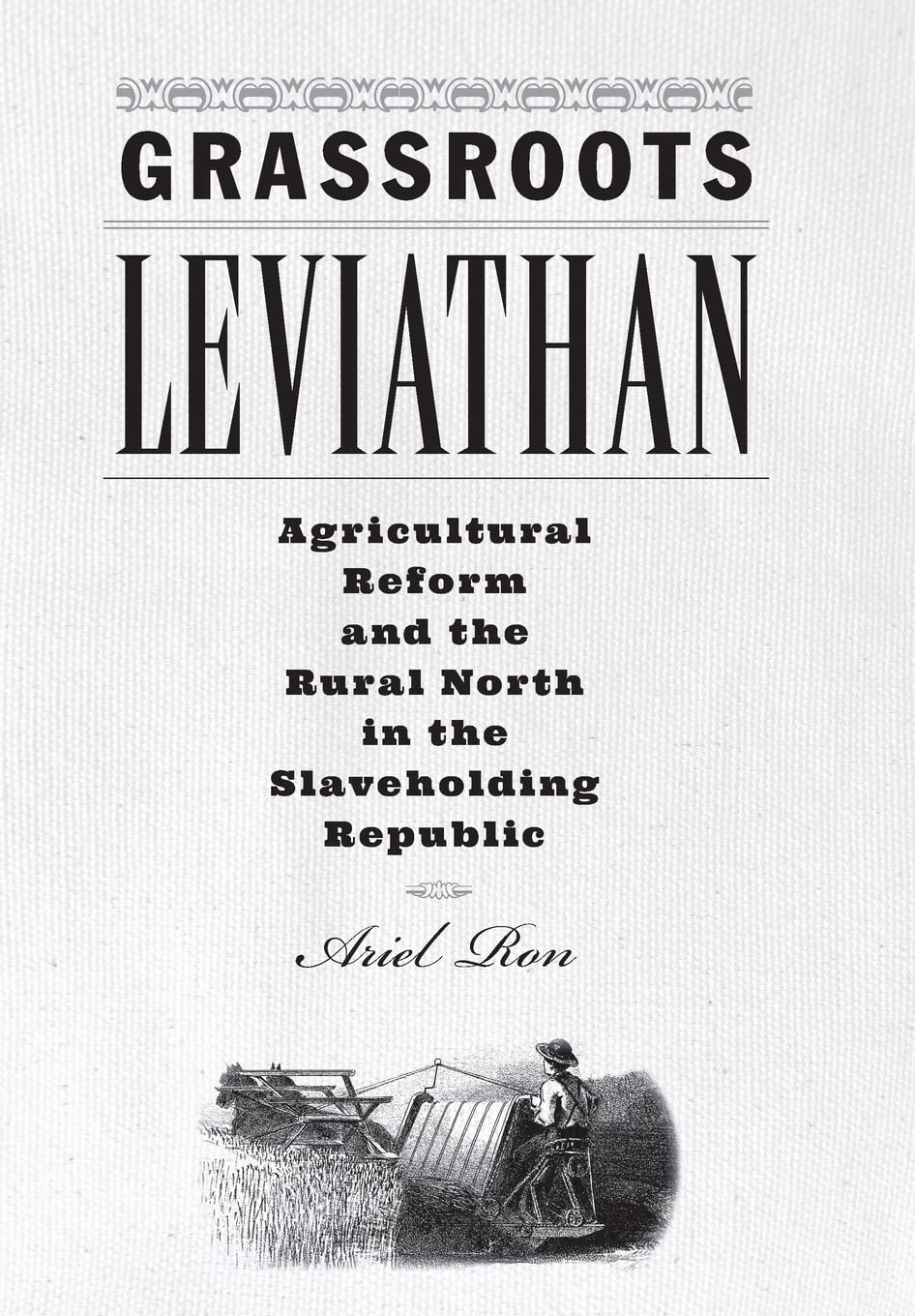In this Kaleckian emphasis on the social dimension of power, Grassroots Leviathan runs against the grain of influential trends in Civil War historiography, including a narrowly “economic interpretation” that emphasizes the material divergence between Northern capitalists and Southern slaveholders. Looking beyond the familiar cast of Northern characters in these accounts—urban merchants, bankers, and industrialists—Ron argues that a central antebellum challenge to planter hegemony came instead from a mass coalition of farmers, whose embrace of federal power threatened not just the material but the social foundation of slavery. It was precisely this rural majority, amounting to a two-thirds voting majority throughout the first half of the nineteenth century, that took the most consequential political initiative in the tumultuous decades of sectional crisis leading up to the founding of the Republican Party in 1854. At the grassroots level, millions of mostly Northern farmers organized themselves into a heterogeneous but powerful “agricultural reform movement” that looked to the burgeoning U.S. state for wider fiscal and regulatory powers in the countryside—a nightmare scenario for slaveholders. In this context, agricultural rather than industrial policy was the main arena for sectional strife.
At stake were two fundamentally different visions of what an agricultural society should be. In contrast to Southern planters, Northern farmers looked to increase productivity and efficiency and embraced a role for the public sector, since federal investment—whether in transport, communications, geological surveying, or land development—would socialize the overhead costs of private producers and boost aggregate profits. Meanwhile, state support for universal education, public health, and consumer protection would make for better, more productive farmers. This vision of capitalism was perfectly compatible with an interventionist state, which became, in a sense, a fourth factor of production alongside land, labor, and capital. In this way, the Northern vision helped give rise to what Ron calls the “Grassroots Leviathan,” a nod to the seventeenth-century English political philosopher Thomas Hobbes’s use of the term: a powerful, administrative government collectively “authorized” by the people, erected in order to accomplish what the people cannot accomplish by itself, but over which the people retain ultimate sovereignty. It was in the course of elaborating the Northern vision that the young republic entered its first and most violent Kaleckian moment, as Southern planters and their representatives in office waged an uncompromising battle to preserve their traditional political dominance against the encroachment of an innovating, developmental state from the North.
In recovering these stakes of antebellum agricultural society, Grassroots Leviathan upends conventional wisdom about urban-rural divides in U.S. society and revives a remarkable political economic formation in which popular, democratic developmentalism successfully won out over reactionary, vested interests. That achievement is worth revisiting now as a new economic agenda of government investment—what some have called “Bidenomics”—seeks to unseat the prevailing neoliberal consensus of the last four decades. If anything, Ron’s study reminds us, neoliberalism has been the historical aberration in the course of U.S. economic development, which instead has been marked by a strong and activist state with legitimacy won through grassroots popular support. At the same time, the agricultural reform movement’s successes were matched by notable failures, particularly around race and ongoing exploitation of land and labor, in the aftermath of the Civil War. The result is a contradictory legacy that any popular movement for reform should both learn from and reckon with today.
